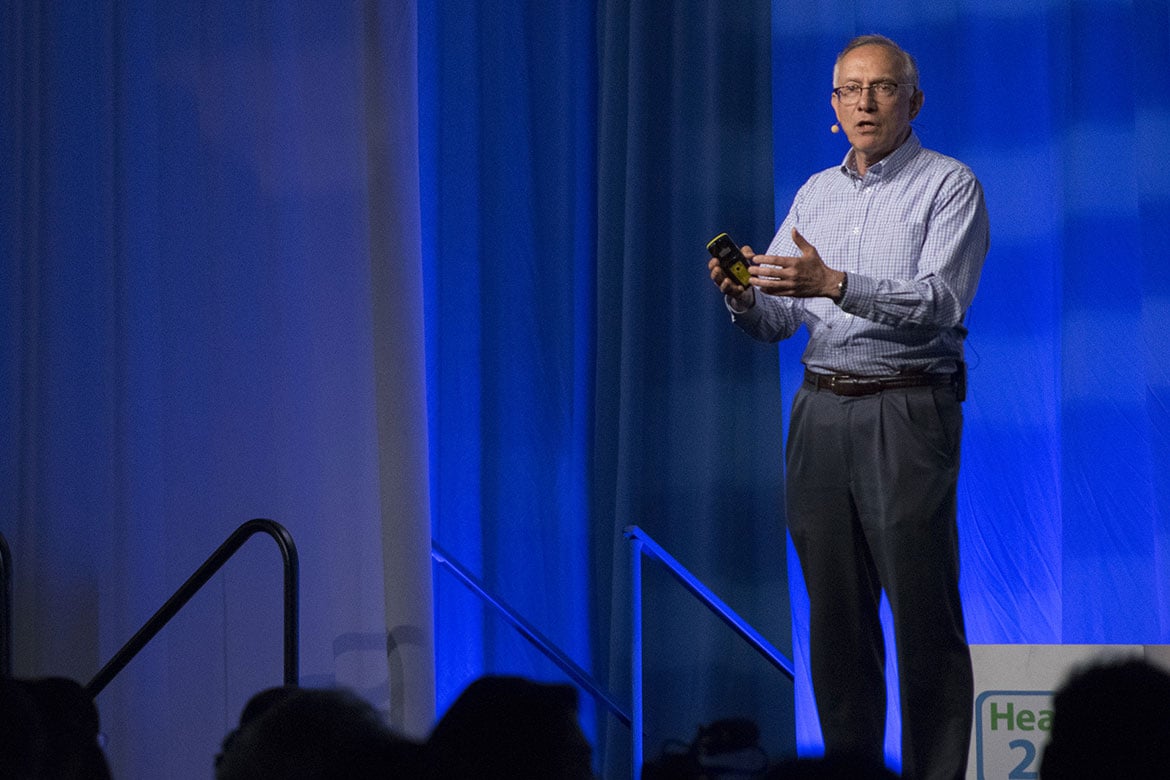Prevention is one of the most important aspects of health care, but what about those patients who already have serious chronic illnesses that do not have a cure? Harvey Fineberg, MD, president of the Gordon and Betty Moore Foundation, spoke last week at Health 2.0 in Silicon Valley reminding entrepreneurs that we need to develop solutions for patients with chronic illnesses to live happier, more comfortable lives.
Since his time as President of the Institute of Medicine from 2002 to 2014, Dr. Fineberg said he’s been working toward understanding where and how a patient-centered health system is possible and where the current system is falling short.
“Our objective is to improve the experience and outcomes of patient care,” Dr. Fineberg said. His work is centered around a group of patients that often is too diffusely scattered, patients who don’t fall into a single disease category and are not “well caught in our health care system.”
“This is a group of patients who have serious illness,” he said. “[They] have one or more long-lasting conditions that is not curable and that changes in an important way your function and your ability to live your life the way you would like.”
Though the importance of technology is obvious, Dr. Fineberg said, there is one fundamental driver that is so basic it is often overlooked—demographic and epidemiologic trends.
“Two thirds of those today who are age 65 or older have two or more chronic diagnoses, that doesn’t mean they’re all seriously ill, but they are in jeopardy of becoming seriously ill,” Dr. Fineberg said. “In fact, serious illness by this definition can affect anyone at any age, but it is especially problematic and especially a challenge for those as we get older.
The care that you want vs. the care that you get
When patients have a serious illness there is often a major difference between the care that they want and the care that they get, Dr. Fineberg said. “In fact, what most people want is a better quality of life.”
“71 percent say [quality of life] is more important to them than the chance of improvement through interventions,” he said. “Only 30 percent of care that people actually receive aligns with their actual preferences.”
Most people, when they have chronic late-stage illness, especially approaching their death, want to be at home, he said. “They want to be surrounded by loved ones. I certainly would. I don’t want to be isolated with a bunch of tubes sticking out of every orifice. I don’t want to be separated from the people who mean my life to me; I want to experience their love and their comfort up until the end. Well, only one-third of deaths occur at home.”
“We can do better,” he said. “What will it take? Well, it will take a lot. We are trying to approach that from the vantage point of a foundation by taking a system’s approach.”
Dr. Fineberg said we need to look at the problem with five key components:
- “Educating the public so that every individual knows what their entitlement is for the control of their own care and their own life destiny."
- “Looking at the payment system, because if the payment system is going to pay up to, let’s say, $100,000 for a pill you need to extend your life … but will not pay for hot meals delivered to your home, we have a problem."
- “Better development of the workforce; we need clinicians, doctors, and nurses who understand that the goals of the patient are what we begin and end with. We need to be able to prepare those at home and family members who are caring for those who are seriously ill. We have to design the kinds of teams and support structures that will enable them to work effectively and meet their loved one’s needs to make their serious illness less burdensome and make their final days more sympathetic."
- “Design model programs in communities, because institution-based systems will not solve this problem. We need to have community-based care systems that will organize to meet the needs of the seriously ill. In fact, there are many models in development. In our preliminary survey, we found more than six dozen well-designed community-based models on which we can bet."
- “A monitoring system to track the workforce and make sure the public is fully educated and prepared to do their part as well.”
Dr. Fineberg told the technology community exactly what they can do to improve care for this vulnerable population.
First, develop platforms specifically for seniors with unmet needs—platforms that accommodate the range of those needs, regardless of a patient’s illness, health status and living situation.
Second, design systems that adapt as patient needs progress and that connect clinicians with patients and their families.
Third, acknowledge that a population of seriously ill patients cannot be served by applications that are only about staying well. Help them connect seamlessly to their caregivers through remote and other technologies.
“I believe that if we focus on the patient and focus on putting more life into years as well as more years into lives, we can meet the needs of these millions of patients,” Dr. Fineberg said, “and we can do it in a way that is less costly … and we can do it in a way that demonstrates the power of technology with systems design to solve people’s problems.”




